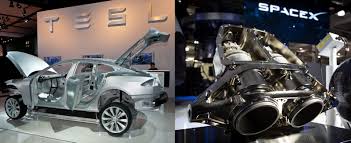
Breaking News
 Amish Butter Canning Method | Preserving Butter Without a Pressure Canner
Amish Butter Canning Method | Preserving Butter Without a Pressure Canner
 Russia-Flagged Tanker Seized by US Coast Guard After Slipping Past Venezuela Blockade
Russia-Flagged Tanker Seized by US Coast Guard After Slipping Past Venezuela Blockade
 WASHINGTON SAYS COMPLY OR DIE | The State Just Destroyed an Elderly Farmer Over a Road.
WASHINGTON SAYS COMPLY OR DIE | The State Just Destroyed an Elderly Farmer Over a Road.
 Lies And Corruption Tarnish Trump's Venezuela Operation
Lies And Corruption Tarnish Trump's Venezuela Operation
Top Tech News
 The First Production All-Solid-State Battery Is Here, And It Promises 5-Minute Charging
The First Production All-Solid-State Battery Is Here, And It Promises 5-Minute Charging
 See inside the tech-topia cities billionaires are betting big on developing...
See inside the tech-topia cities billionaires are betting big on developing...
 Storage doesn't get much cheaper than this
Storage doesn't get much cheaper than this
 Laser weapons go mobile on US Army small vehicles
Laser weapons go mobile on US Army small vehicles
 EngineAI T800: Born to Disrupt! #EngineAI #robotics #newtechnology #newproduct
EngineAI T800: Born to Disrupt! #EngineAI #robotics #newtechnology #newproduct
 This Silicon Anode Breakthrough Could Mark A Turning Point For EV Batteries [Update]
This Silicon Anode Breakthrough Could Mark A Turning Point For EV Batteries [Update]
 Travel gadget promises to dry and iron your clothes – totally hands-free
Travel gadget promises to dry and iron your clothes – totally hands-free
 Perfect Aircrete, Kitchen Ingredients.
Perfect Aircrete, Kitchen Ingredients.
 Futuristic pixel-raising display lets you feel what's onscreen
Futuristic pixel-raising display lets you feel what's onscreen
 Cutting-Edge Facility Generates Pure Water and Hydrogen Fuel from Seawater for Mere Pennies
Cutting-Edge Facility Generates Pure Water and Hydrogen Fuel from Seawater for Mere Pennies
Could Tesla And SpaceX Join Hands For Global Internet Service?

As anyone who's stuck paying an onerous bill to a local internet monopoly will agree, there's a great market opportunity out there for any company that could offer a global wireless internet connection. SpaceX has been working on just that since 2015, developing a broadband satellite constellation called Starlink. A recent article in SmarterAnalyst proposes that Tesla could be an integral part of the plan.
According to SmarterAnalyst, SpaceX is set to invest around $10 billion in Starlink. Satellite launches are scheduled to begin in 2019 and be completed by 2024. Starlink's satellites will be located just 210 to 750 miles above the ground, one of the lowest satellite constellations ever launched. The lower the satellites, the faster communication speeds can be. Starlink hopes to offer internet speeds of 1,000 Mbps, comparable to 5G (about 1,400 Mbps). However, to provide the blazing fast connection speeds Starlink is promising, it needs to have ground transceivers – small terminals mounted on customers' homes or businesses, analogous to satellite dishes.



